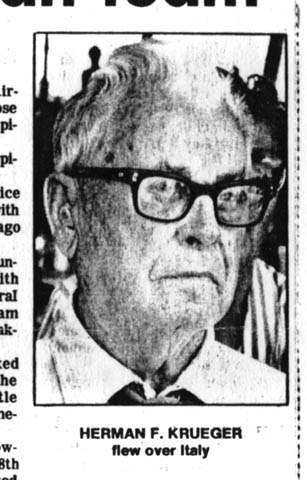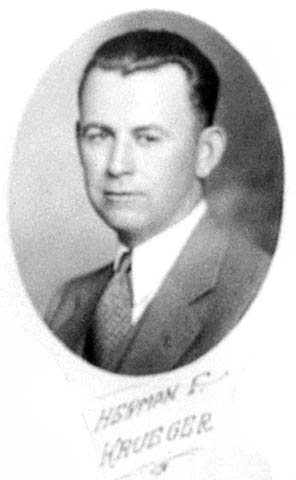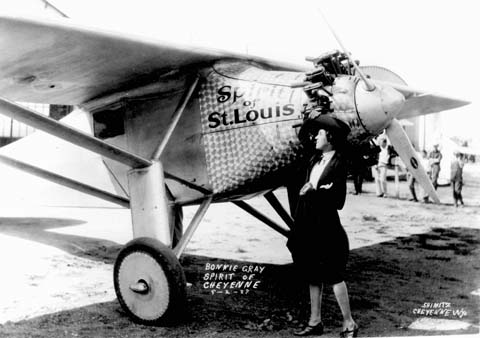
Bonnie Gray, champion rodeo cowgirl and trick rider, poses beside the “Spirit of St. Louis” during Col. Charles Lindbergh’s Guggenheim tour stop in Cheyenne, September 2, 1927 (WSA Richardson Print 636)
90 years ago today, Charles Lindbergh and “The Spirit of St. Louis” touched down in Cheyenne, Wyoming. His visit was part of a tour sponsored by the Daniel Guggenheim Fund to promote national interest in aviation. By all counts, the tour was a rousting success at this.
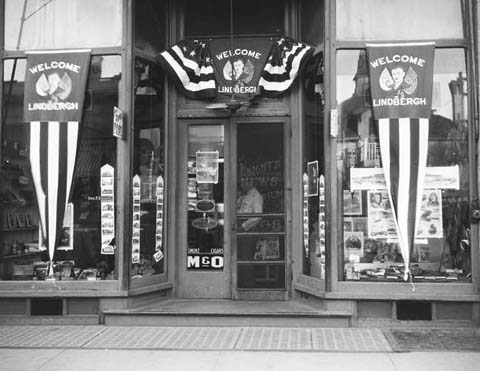
Knights News Emporium in downtown Cheyenne festooned with bunting welcoming Lindbergh to Cheyenne (WSA Meyers Neg 3069)
The 3-month, 92 city tours of all 48 states followed Lindbergh’s solo trans-Atlantic flight in May and coincided with the release of his book “WE”, recounting the flight, that July. It is estimated that 30 million people or roughly one quarter of the United States population saw the aviator.
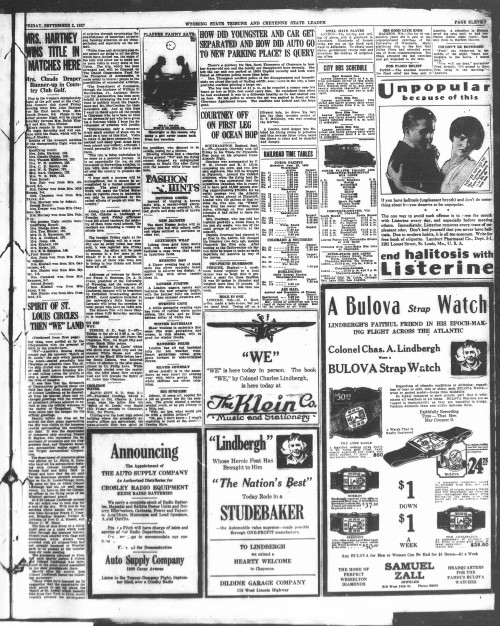
The local papers were plastered with ads attempting to cash in on Lindbergh’s visit to Cheyenne (Wyoming State Tribune-Cheyenne State Leader 9-2-1927 p11)
Cheyenne was not immune to Lucky Lindy fever. Already a regional aviation hub, the city fathers saw this as a chance to shine and everyone wanted a piece of the action. Downtown buildings were festooned with bunting and pictures of the aviator. Significant portions of 3 days’ newspapers (September 1-3) were devoted to the stop, reporting in detail scheduled stops, meetings, tours, dinners, and speeches.
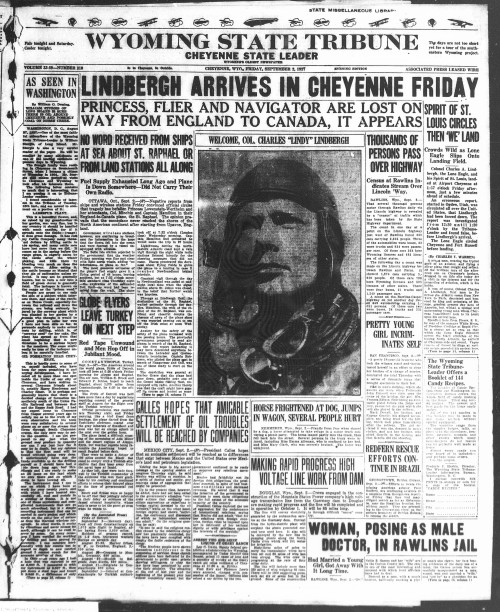
Front page of the Wyoming State Tribune-Cheyenne State Leader announcing Lindbergh’s arrival in Cheyenne. (September 2, 1927, p.1)
According to the papers, Lindbergh landed at the air field just before 2 pm. The paper took care to refute reports that the aviator was forced down by engine trouble. He was then given a tour of the business district by Governor Frank Emerson, Mayor C.W. Riner and Brigadier General Dwight E. Aultman of Fort D.A. Russell (now Warren Air Force Base). He then gave a short speech at Frontier Park which was broadcast live by local radio station KFBU. He spent sometime talking to the press at the Plains Hotel before a banquet with 600 lucky Cheyennites. The retired to his room at the Plains for the night. The next morning at 6 am, he left for Salt Lake City almost 2 hours early.
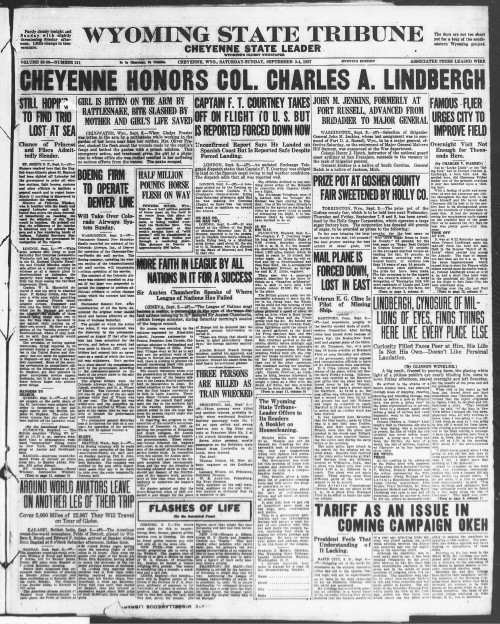
(Wyoming State Leader-Cheyenne State Tribune 9-3-1927 p1)
The press seemed to sympathize with the “Lone Eagle” and his packed schedule. They reported him looking extremely tired but remaining courteous and in good spirits despite an incessant press of people straining to get a glimpse of their hero.
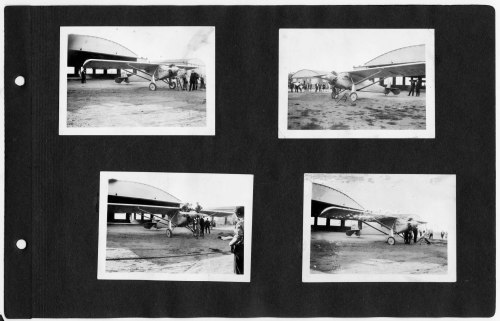
Scrapbook page showing 4 prized photos taken shortly after the “Spirit of St. Louis” landed at the Cheyenne air field. The law enforcement officers guarding the plane can be seen in these images, along with ropes used to manage the crowd. (WSA P99-7/39)
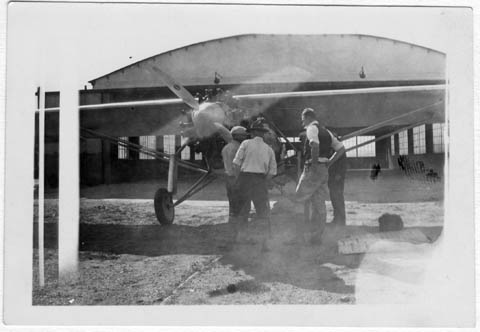
Lindbergh and other men, probably mechanics or air field attendants, standing beside the “Spirit of St. Louis” with a hangar in the background. This is one of four photographs of the visit generously donated to the Wyoming State Archives in August 2017.
Additional Reading
“Guggenheim Tour,” CharlesLindbergh.org. (accessed Aug 2017)
WE, by Charles Lindbergh (1927). The book was published by George P. Putnam of New York. Putnam enthusiastically promoted aviation and would later marry Amelia Earhart.

